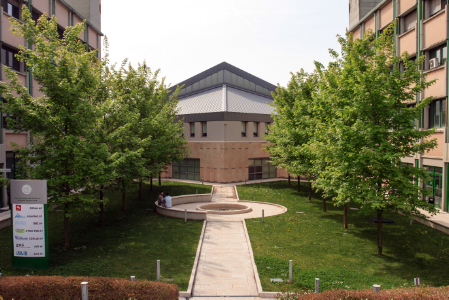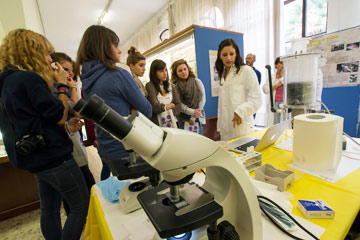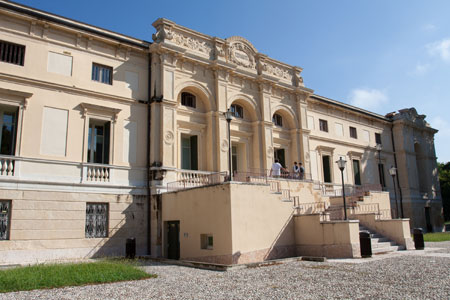Course Not running, not visible

- Course code
- 4S006211
-
Name of lecturer
-
Adolfo Speghini
- Number of ECTS credits allocated
-
6
- Academic sector
-
CHIM/07 - PRINCIPLES OF CHEMISTRY FOR APPLIED TECHNOLOGIES
- Language of instruction
- Italian
- Period
-
II sem. dal Mar 1, 2018 al Jun 15, 2018.
To show the organization of the course that includes this module, follow this link  Course organization
Course organization
Lesson timetable
Go to lesson schedule
Learning outcomes
Module 2
The module is focused on the chemistry of inorganic nanostructured materials for biomedical applications and on their structural, spectroscopic and colloidal properties.
The laboratory experiences are aimed to develop the skills of preparation, characterisation and functionalization of inorganic nanostructures for applications in biotechnology and nanomedicine.
Syllabus
Module 2
Theory
1) Inorganic nanoparticles for biomedical applications. Nanoparticles activated with lanthanide ions, Quantum Dots and their spectroscopic properties. Hydrothermal synthesis of inorganic nanoparticles and their chemical and physical characterisation.
2) Surface functionalization of nanoparticles with hydrophilic capping agent for dispersion in an aqueous environment. Conjugation of inorganic nanostructures with biological molecules.
3) Characterization of functionalized colloidal inorganic nanoparticles. Measure of the hydrodynamic diameter and Zeta Potential using Dynamic Light Scattering (DLS) technique. Study of the surface functionalization using infrared and Raman vibrational analysis.
Laboratory
1) Synthesis by hydrothermal methods of CaF2 and SrF2 nanoparticles functionalized with lanthanide ions and their spectroscopic characterization in the ultraviolet (UV), visible and infrared range (absorption and emission). Measure of their colloidal properties.
2) Synthesis of ZnO Quantum Dots by wet chemical methods. Surface functionalization with PEG. Spectroscopic characterisation in the UV, visible and infrared range. Measure of the hydrodynamic diameter and Zeta Potential. Vibrational investigation using infrared spectroscopy.
Assessment methods and criteria
STUDENT MODULE EVALUATION - 2017/2018








